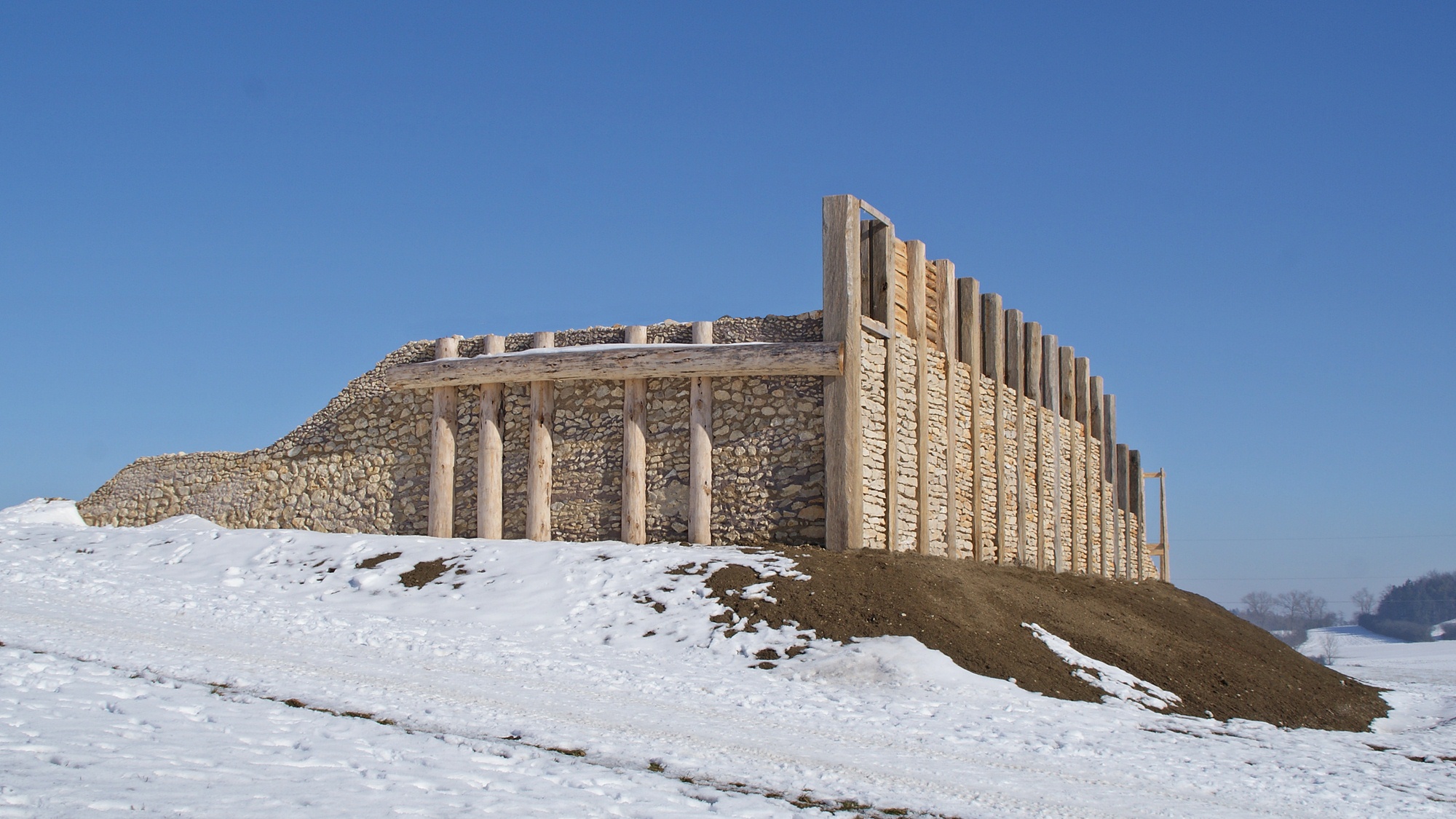Pfostenschlitzmauer on:
[Wikipedia]
[Google]
[Amazon]
 A ''Pfostenschlitzmauer'' (German for "post-slot wall") is the name for defensive walls protecting
A ''Pfostenschlitzmauer'' (German for "post-slot wall") is the name for defensive walls protecting
File:2018 Rheinisches Landesmuseum Trier, Keltischer Wehrmauer.jpg, Model of a ''Pfostenschlitzmauer'' wall of the "Altkönig-Preist" type
File:Murus Gallicus 2.jpg, Reverse view
File:Keltische Steinmauer auf dem Kordigast.jpg, ''Pfostenschlitzmauer''-type fortification wall
Bronze Age
The Bronze Age () was a historical period characterised principally by the use of bronze tools and the development of complex urban societies, as well as the adoption of writing in some areas. The Bronze Age is the middle principal period of ...
and Iron Age
The Iron Age () is the final epoch of the three historical Metal Ages, after the Chalcolithic and Bronze Age. It has also been considered as the final age of the three-age division starting with prehistory (before recorded history) and progre ...
hill fort
A hillfort is a type of fortification, fortified refuge or defended settlement located to exploit a rise in elevation for defensive advantage. They are typical of the late Bronze Age Europe, European Bronze Age and Iron Age Europe, Iron Age. So ...
s and '' oppida'' in Central Europe, especially in Bavaria
Bavaria, officially the Free State of Bavaria, is a States of Germany, state in the southeast of Germany. With an area of , it is the list of German states by area, largest German state by land area, comprising approximately 1/5 of the total l ...
and the Czech Republic
The Czech Republic, also known as Czechia, and historically known as Bohemia, is a landlocked country in Central Europe. The country is bordered by Austria to the south, Germany to the west, Poland to the northeast, and Slovakia to the south ...
. They are characterized by vertical wooden posts set into the front stone facing. The rampart
Rampart may refer to:
* Rampart (fortification), a defensive wall or bank around a castle, fort or settlement
Rampart may also refer to:
* LAPD Rampart Division, a division of the Los Angeles Police Department
** Rampart scandal, a blanket ter ...
is constructed from a timber lattice filled with earth or rubble. The transverse cross-beams may also protrude through the stone facing, as with the '' murus gallicus'' used in Gaul
Gaul () was a region of Western Europe first clearly described by the Roman people, Romans, encompassing present-day France, Belgium, Luxembourg, and parts of Switzerland, the Netherlands, Germany, and Northern Italy. It covered an area of . Ac ...
and western Germany. It is sometimes referred to in English as a timber-framed wall.
The construction method is also known as "Kelheim-style", named after the extensive ramparts at the oppidum of Kelheim.
At the oppidum of Manching, an earlier ''murus gallicus'' rampart was rebuilt in ''Pfostenschlitzmauer'' style.
Gallery
See also
* '' Murus Dacicus'' * '' Murus Gallicus'' * Urnfield culture * Hallstatt cultureReferences
* ''The Ancient Celts'', Barry Cunliffe (1997) * ''Celtic Fortifications'', Ian Ralston (2006) * ''Manching: Die Keltenstadt'', Susanne Sievers (2003), {{Authority control Fortification (architectural elements) Hill forts Oppida Iron Age Europe German words and phrases